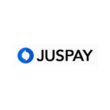Four fintech trends to watch in 2022 and beyond
The fintech revolution shows no signs of slowing down.

2022 could be a pivotal year for fintech
Despite the huge challenges brought about by the pandemic, investor confidence continues to soar, with the value of the global fintech market tipped to rise from $127 billion in 2018 to an estimated $309.98 billion by 2022 – an incredible 25% increase year on year.
Challenger banks are also on the rise. The Bank of London made history recently by achieving a $1.1 billion valuation on debut and becoming the second UK clearing bank to launch in the past 250 years.
So, what’s next on the horizon? Here are the top trends I believe will shape the fintech landscape in 2022 and beyond.
Contextual financial services will become mission critical
2022 will be the year we see embedded finance (the seamless integration of financial services within non-financial environments) go mainstream.
The modern consumer doesn’t just expect a contextual and seamless digital experience – they demand it. Financial services are no exception. Consumers want to manage their money, make payments, and access credit when and where they need to with minimum hassle.
Smart companies have realised that by embedding financial products into their customer experience, they can further monetise their brands and create a happy, loyal customer base. A win-win on all fronts.
As the embedded finance ecosystem matures and a host of innovative new technologies enter the market, it will become easier than ever for brands to embed financial services into their products.
In the coming year, we’re likely to see an explosion of SMEs, tech start-ups, and even traditional brick-and-mortar brands scrambling to augment their customer experience with contextual financial offerings.
One-click will become the checkout of choice
Amazon pioneered one-click checkout over a decade ago. Since then, we’ve seen many new disruptive players enter the space, like Checkout.com and Bolt, who are using it to revolutionise the consumer purchasing experience.
As commerce continues to go mobile, real-time consumer interconnectivity will become mainstream and digital payment methods will overtake physical credit cards. Over time, I believe we will see the demise of the manual checkout process in favour of one-click convenience.
In 2022, I think we’ll start to see one-click payments become the dominant form of checkout in the world of e-commerce, with new players looking to go even further and provide further integrated options like one-click insurance or BNPL as well.
Web3 will become safer and more accessible
There’s a lot of hype around Web3, and with good reason. Today, the majority of apps and content on the internet are owned and run by a concentrated group of companies we have come to know as “Big Tech.”
Web3 aspires to decentralise the internet by rebuilding it on distributed, user-driven ledger technology (i.e. blockchain). While this has great potential to democratise the web, decentralised finance (DeFi) – Web3’s primary financial exchange mechanism – leaves a lot to be desired by way of consumer protection.
DeFi is built exclusively on blockchain and does not rely on any financial intermediaries (brokerages, exchanges, banks, and so on) for people to exchange funds. This enables direct peer-to-peer transactions, but the lack of oversight or accountability creates huge risk.
The technical barriers to entry for new Web3 users remain high, which means new users frequently struggle to engage with the technology in a safe and positive way – often with dire consequences.
And when things do go wrong, there is little recourse due to the nature of blockchain and the total lack of consumer protection across the platform. When a person becomes the victim of fraud, exploitation, or any other type of financial crime in the world of DeFi, the algorithms that power the technology don’t have any remit for recourse.
In 2022, I expect to see teams in the Web3 space start to deliver solutions to the three challenges of accessibility, usability, and consumer protection. These key focus areas will help deliver on the promise of Web3, create a safe environment for financial transactions, and give the public the confidence they need to adopt it at scale.
New entrants will face higher standards for compliance and financial crime
The fintech community saw dramatic growth in 2021 with 43 new fintech unicorns in the third quarter alone – twice the number recorded for the same period last year. However, this vigour in the industry has also brought a renewed sense of innovation at all costs.
Challenger banks and neobanks have found a sweet spot in delivering the delightful, mobile-first user experience that consumers have come to expect from all transactions. However, in an attempt to meet the ever-changing demands of consumers, some fintechs have found themselves in hot water with regulators.
As regulators and customers start to demand more accountability, 2022 will likely bring compliance to the forefront.
Compliance is not just a box to be ticked, but a mission-critical pillar for any financial services institution or fintech looking to bring a product to market. Customers expect a simple and quick experience, and the challenge will lie in how to deliver that without compromising on financial crime checks and controls.
A look to the future
2021 saw a dramatic rise in fintech innovation and investment, and the trends discussed here are just the tip of the iceberg.
As the fintech sector matures, it will continue to play a critical role in shaping the future of financial services and delivering the seamless and contextualised experiences consumers demand.
The rise of new platforms like Web3, cryptocurrency, instant checkout, and brands adopting embedded finance at scale are just a few reasons 2022 will be a pivotal year for fintech – and an exciting one at that!











































